From Valencia on the way to Granada, Sunday - Tuesday, June 24 - 26, 2007
From El Saler Campsite via Manises, Sueca, Platja i Grau de Gandia, Dénia, Xábia/Jávea, Altea, Villajoyosa/La Vila Joiosa, and Lorca
Down the “German” coast, then inland west to Granada
As we travel we pick up tidbits of “You must do this…” and “Don’t skip that…” along the way. Thus, Manises, Sueca, Denia and Altea were recommended stops. While Debbie had learned through the Internet about a little chocolate museum in Sueca, the young attendant at Atelier Chocolat du Bayonne had also highly encouraged us to visit. Alba spoke highly of the suburb of Valencia, Manises, a center for ceramics. Sadly, the Sunday morning we made it there, it was all closed.
The Albufera
Valencia is built on the river Turia, on the north edge of what is called the Albufera. The English version of the Wikipedia has no meaningful information, but the Spanish version does, and includes a NASA photograph. While we did see orange trees in the area, in particular in the courtyard of La Lonja de la Seda, the Valencia orange has nothing directly to do with the city.
The Turia floods. The entire area from Valencia to the southern end of the Albufera, where a bit of a mountain closes it off, is a large “wetlands.” The name comes from the Arabic: البحيرة al-buhayra, Spanish: el pequeño mar or, in English: “the little sea”. The primary crop here is and has been for a very long time: rice. While Spain does not grow a lot of wheat and gluten seems to be in short or poor supply, there is a lot of rice. In Spain the “hot chocolate” resembles “hot chocolate pudding,” because it is thickened with rice flour.
We drove from Manises along the northwest edge of the Albufera, to Sueca on the southwest edge and found decent signage for the museum we planned to see.

Nonetheless, without a street map, we needed to ask for directions every few blocks.
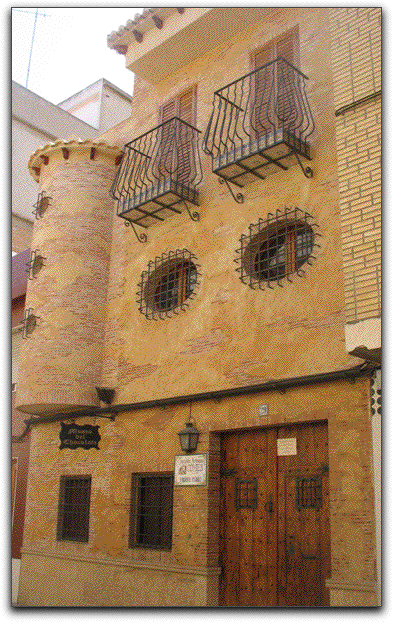
The current owner of the family business
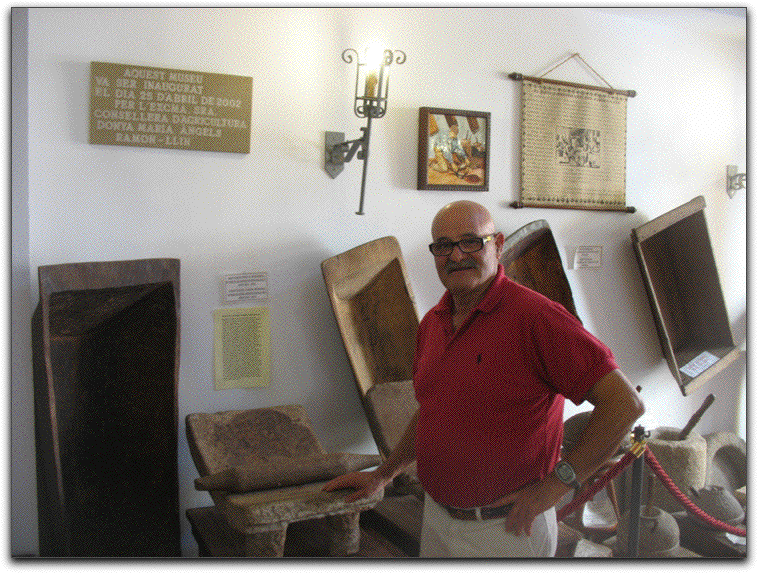
gave us a tour… in Spanish for the Spanish couple that joined us. He demonstrated how his company does not use computers to determine if the cacao has been ground enough, they check the feel of it. He showed us how he uses a cotton cloth to form the thick dry paste into rolls that they then wrap for sale.

All the while he would separate off a little chunk of chocolate and eat it, sharing with us as well. His grandchildren eat it throughout the day. As their chocolate is both pure without chemical additives and only raw sugar, it is (supposedly) very healthy.
Another lunch along the Mediterranean
Driving south along the coast of Spain we pulled into the very busy beach town Platja i Grau de Gandia which supposedly has a variety of cultural activities. All we needed or had time for was a quiet place to enjoy the lovely ocean air as we ate.
Hug the Coast
If Mark has a choice of taking the fast route a few kilometers in from the coast, or the coastal route that weaves slowly through every village offering views of the water and the countryside… he’ll “take the slow road to….” Since he was a child he has enjoyed observing whatever happened to be along the way. And so we drove along what James Michener, thirty years earlier had called the “German Coast.” Then vast numbers of Germans and other northern Europeans enjoyed the warmth and the water, while the Spaniards could not afford to. In particular we took a short break at Dénia, another “shouldn’t be missed” town.
Men and women of all ages and body shapes, sunbathing topless, enjoying the glistening water from the beach, sail surfing, or hangliding. We squinted into the bright sun.
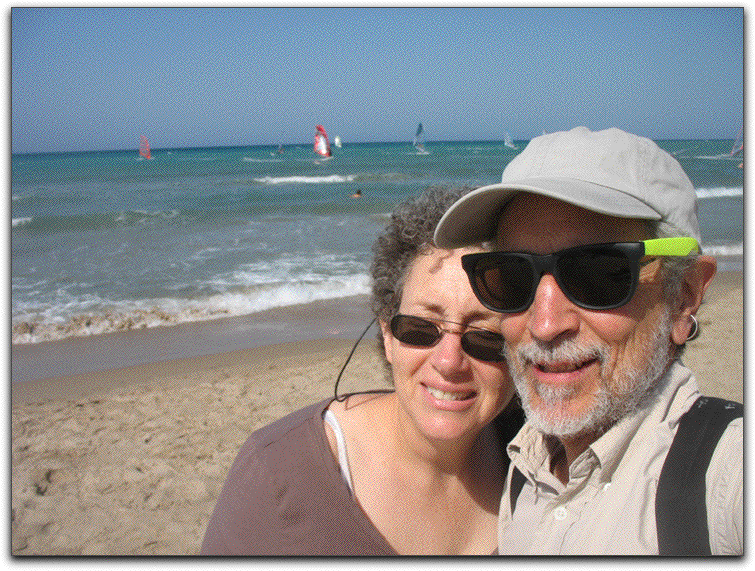
From Dénia, the road climbs up a one and a half lane road through Xábia/Jávea up to El Montgó which forms the Cap de Sant Antoni and the Cap de la Nau, then back down the other side. We continued on to Altea where we spent a couple of days doing laundry and waiting for a local VW dealer to open so we could get the gas for our stove fixed. We went for some good long walks and found time to read
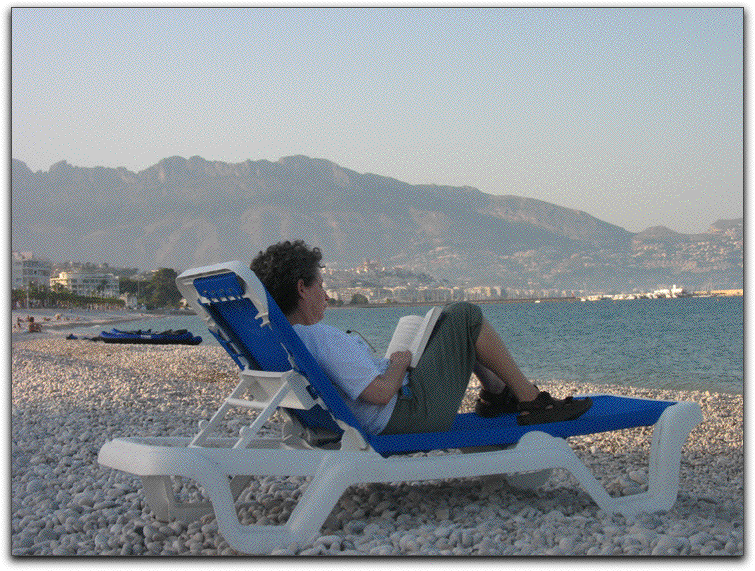
on the very rocky beach.

We were pleased to be on a beach where most of the people around us spoke Spanish
Ready to start out again and get the stove fixed, we learned that the local VW dealer only handles normal mechanical problems, not specialized camper issues. So we continued to drink cold water, no tea, and no hot meals… except for those very few when we “ate out.” Understand, this was not a problem for us; in the heat we were happy to eat simply.
Valorous Chocolate in the Joyful Village
We might have traveled the fast route from Valencia to Alicante, on our way to Granada, were we not interested in chocolate. However, Villajoyosa/La Vila Joiosa offers Valor Chocolates, yet another chocolate museum. Most of the people in our noon group-tour there spoke either Spanish or German. We chatted with our guide in English. It turns out that, Guillermo Xul, of Mayan ancestry, grew up in Marin County, CA and went to school at U.C. Berkeley in the ’70s where he studied anthropology of Mayan culture. He sculpts in solid chocolate. Most of the chocolate sculpture we’ve found is made with from pieces “glued” together (using warm chocolate). Guillermo plans to leave Spain to open his own museum in Mexico. We hope to visit him there.
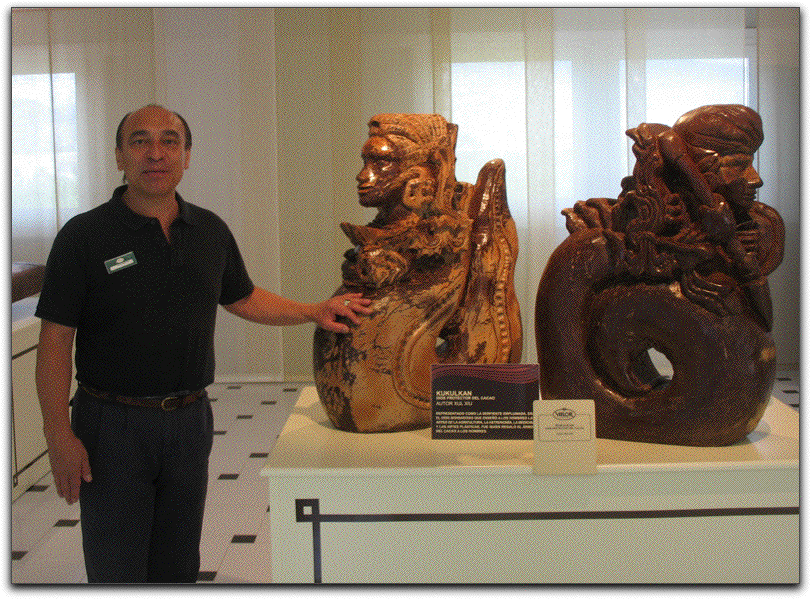
The Long Trek West
As we left the Mediterranean coast once again, we headed west into the mountains towards Granada. Towns and villages became sparser with the landscape changing as the olive orchards and grape vines began to thin out. After a couple of hours of driving we were ready for a break. The skies darkened and a little rain fell… enough to get the windshield dirty again. The closest town ahead was called Lorca which Mark hoped (in vain) was somehow related to the poet Federico García Lorca. We drove into the new part of the city, around its central fountain, and then found the info station for the old town. We stretched our legs and drove on. Only later did we learn:
“As the medieval fortress is intended to be converted into a state-run hotel (Parador Nacional), excavations were carried out on site by way of power shovels. After the remains of a synagogue and a Jewish ghetto were found near the fortress, the work has been continued despite massive protests by prominent archaeologists.”
We had not seen any reference to Lorca in our Jewish guide books. Whoever wrote the above sentences in the Wikipedia used the term “ghetto” inaccurately (probably meaning Judería instead). The Web includes reference to a synagogue in Lorca. If only we had known.
As we left Lorca, the climb became steeper, the olives and grapes replaced by pines. We made our way into the original Sierra Nevada mountains.
start || back || next









